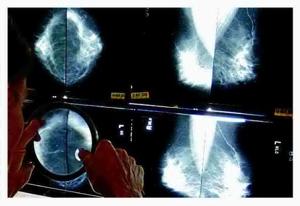Breast cancer remains a significant health challenge, ranking as the second leading cause of cancer-related deaths among women globally. Early detection through regular mammograms plays a critical role in improving treatment outcomes, according to data from the American Cancer Society. The organization emphasizes that women undergoing routine screenings can substantially enhance their chances of successful treatment.
Regular mammograms can detect breast cancer at an early stage, when it is most treatable. Statistics indicate that approximately 1 in 8 women will develop breast cancer during their lifetime. This underscores the importance of proactive health measures, particularly for women aged 40 and older, who are encouraged to begin annual screenings.
Understanding the Impact of Early Detection
Research shows that early detection through mammograms can reduce the mortality rate associated with breast cancer. The Global Health Organization reports that timely diagnosis can lead to survival rates exceeding 90% when the cancer is identified at an early stage. By contrast, cancers diagnosed at a later stage often result in more complex treatment and a lower likelihood of survival.
Health professionals advocate for increasing awareness about the importance of mammograms. Dr. Jane Smith, a leading oncologist, states, “Regular screenings can save lives. Early detection allows us to intervene sooner and provides patients with more treatment options.”
Barriers to Accessing Mammograms
Despite the clear benefits, several barriers can prevent women from accessing mammogram services. Factors such as cost, lack of insurance, and limited access to healthcare facilities can hinder timely screenings. For instance, women in rural areas may face additional challenges, including longer travel distances to the nearest clinic that offers mammograms.
To combat these disparities, health organizations are working to expand access to screening services. Initiatives include mobile mammogram units and community health programs designed to reach underserved populations. These efforts aim to ensure that all women, regardless of their location or financial situation, have the opportunity to participate in regular breast cancer screenings.
In conclusion, early detection through mammograms significantly increases the chances of successful treatment for breast cancer. As awareness grows and access improves, more women can benefit from these essential screenings, ultimately saving lives and reducing the impact of this prevalent disease.







